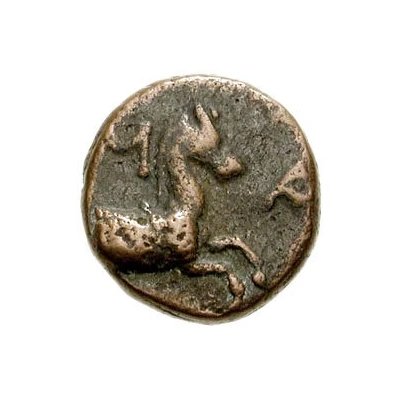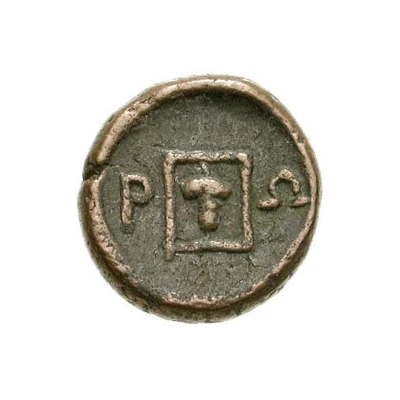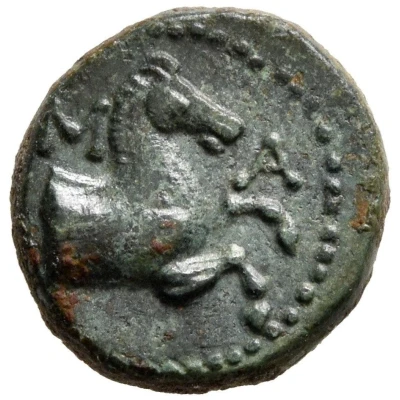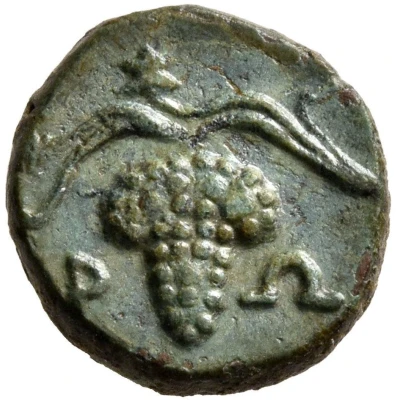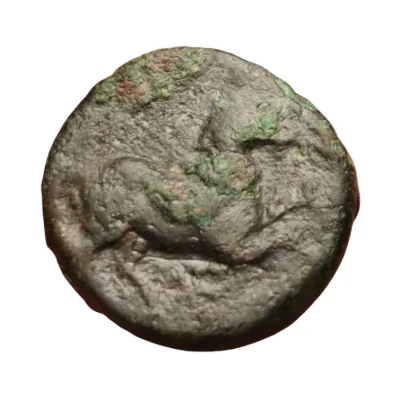
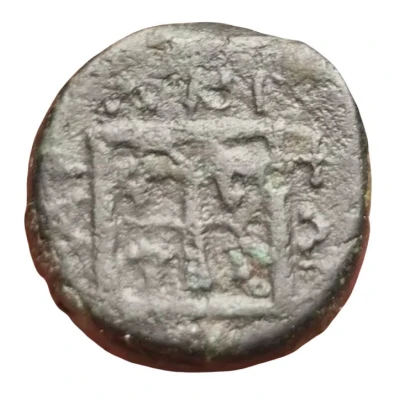

© Rhuank
Æ16 398 BC - 346 BC
| Bronze | 3.69 g | 16 mm |
| Issuer | Maroneia (Thrace) |
|---|---|
| Type | Standard circulation coin |
| Years | 398 BC - 346 BC |
| Currency | Drachm |
| Composition | Bronze |
| Weight | 3.69 g |
| Diameter | 16 mm |
| Thickness | 3 mm |
| Shape | Round (irregular) |
| Technique | Hammered |
| Demonetized | Yes |
| Updated | 2024-10-10 |
| Numista | N#44535 |
|---|---|
| Rarity index | 63% |
Reverse
Three sides of linear square containing vine; monogram beneath.
Grape vines within a square.
Script: Greek
Lettering: ΜΑΡ / ΩΝΙ / ΤΩΝ
Edge
Rough
Comment
These 2,300 year-old coins advertised the wealth and wine of Maroneia, the same city Homer spoke of in The Odyssey. It was the strong wine of Maroneia that wily Odysseus used to make the Cyclops drunk, permitting his escape from the Cyclops's cave! The city of Maroneia was noted for its fine wine and horses. A prancing horse is on the obverse and grape vines within a square are on the reverse. A324V Littleton Coin Company, Inc.
Interesting fact
The Maroneia coin features a unique combination of symbols on its reverse side, including a stylized dolphin and a crescent moon. This combination has been interpreted as a representation of the city's maritime trade and its connection to the sea. The dolphin symbolizes the importance of marine life and trade in the region, while the crescent moon may represent the city's dependence on the lunar cycle for navigation and agriculture. This symbolism highlights the resourcefulness and adaptability of the ancient Maroneians, who were able to thrive in a challenging environment by leveraging their natural resources and trade networks.
Price
| Date | Mintage | VG | F | VF | XF | AU | UNC |
|---|---|---|---|---|---|---|---|
| ND (398 BC - 346 BC) | - | - | - | - | - | - |
Values in the table are based on evaluations by sales realized on Internet platforms. They serve as an indication only for Æ16 (398 BC - 346 BC) coin.
